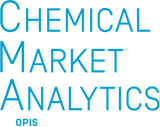Keeping Pace with the Rapidly Changing
Global Aromatics & Fibers Markets
Aromatics products directly impact the costs, margins, and supply-demand positions of multiple downstream industries such as styrenics, nylon, polyester, polyurethanes, and phenolics. Aromatics experts from Chemical Market Analytics understand the strategic market drivers for your aromatics and derivatives business
and can explain critical market developments.
Aromatics and Fibers Strategic Insights

Sustainability
Although more pressing crises are focusing attention on aromatics producers, sustainability remains a key objective to avoid plastic recycling taxes and anticipated future emissions charges. Development work is progressing in the polyester, styrenics, polyurethane, and nylon chains, as well as other areas. Long- term this will impact virgin demand for intermediate products or feedstocks

Mainland China Growth
The covid pandemic has softened demand growth in the largest petrochemical market in the world which represents an important outlet for many aromatics producers, but this has created uncertainty about future growth and the consequent utilization of aromatics quality

Mainland China Self-Sufficiency
Mainland China has undergone a period of rapid capacity expansion in aromatics over recent years, moving the country significantly closer to self-sufficiency for benzene, styrene, phenol, and paraxylene, which will reduce imports from other locations by half or more over the next five years

Crude to Chemicals Capacity Investments
Also located in mainland China have been newly integrated refinery petrochemical sites with a high yield of naphtha and reduced fuel production. These sites continue to be constructed and represent low-cost production capacity relative to other units across Asia

Refinery Rationalization
Refinery rationalizations are expected to threaten aromatics feedstock availability in the long-term and this has been evident in the summer of 2022 through the sudden tightness in octane boosters such as mixed xylenes and toluene, increasing costs for downstream aromatics derivatives

Carbon Emission Allowance
The launch of a CEA (carbon emission allowance) scheme for petrochemicals is anticipated over the next 4-5 year period in mainland China, changing the cost structures of aromatic producers
Near-Term Solutions
Gain Clarity Needed to Navigate the Changing Polyurethane Feedstocks Market Dynamics.
The Global Polyurethane Feedstocks Market Advisory Service provides accurate price analysis and market intelligence to give a current, independent perspective of polyurethane (PU) feedstock markets (MDI, TDI, propylene oxide, and polyether polyols) enabling clients to navigate the market uncertainty ahead.
Aromatics Assists Clients with the Complex Tasks of Tracking, Evaluating, and Forecasting Change in the Quickly Shifting Aromatics Industry.
Managed by our consultants in Singapore, Asia Aromatics offers clients a comprehensive view of Asian markets for aromatics and derivatives, including an in-depth analysis of economic concerns, trade, and operational issues impacting the industry. Through continual, personal contact with key industry sources, our consultants gather and study industry-specific data, then analyze and translate it into valuable insights and forecasting advice.
Clients receive global weekly market updates and regional monthly market analysis, plus a supplement that provides critical supporting data. Monthly regional Market Advisory Services include our prices, unique metrics, and real-time news and intelligence.
Europe Aromatics Assists Clients with the Complex Tasks of Tracking, Evaluating, and Forecasting Change in the Quickly Shifting Aromatics Industry.
Managed by our consultants in London, who bring years of experience and close ties to industry sources, Europe Aromatics offers clients a comprehensive view of European markets for aromatics and derivatives, including an in-depth analysis of economic concerns, trade, and operational issues impacting the industry. Through continual, personal contact with key industry sources, our consultants gather and study industry-specific data, then analyze and translate it into valuable insights and forecasting advice.
Clients receive global weekly market updates and regional monthly market analysis, plus a supplement that provides critical supporting data. Monthly regional Market Advisory Services include prices, unique metrics, real-time news, and intelligence.
Global Nylon Fibers & Feedstocks Report Helps Clients Monitor and Assess Current and Future Market Dynamics for Key Nylon Fiber Types and Their Primary Feedstocks.
In a rapidly fluctuating industry, our weekly and monthly service provides the essential data you need to optimize your market position. Global Nylon Fibers & Feedstocks report provides a comprehensive view of world markets for the entire nylon value chain, from upstream caprolactam to downstream fiber chip and more. Through continual, personal contacts with key industry participants, our consultants gather data specific to the nylon 6 and 6,6 value chains which they then analyze and translate into meaningful insights and forecasting advice. Clients receive weekly and monthly near-term price outlooks and detailed descriptions of key market indicators.
Global Polyester Fibers & Feedstocks Helps Clients Understand the Current and Future Market Dynamics for Key Polyester Fiber Types and their Feedstocks.
In a rapidly fluctuating industry, our weekly and monthly service provides the essential data you need to optimize your market position. Below are just several of the issues faced by the stakeholders in the polyester value chain.
- New market entrants into Asia and the Middle East
- Consolidation in Europe and the Americas
- Volatility in production costs.
Global Polyester Fibers & Feedstocks helps you successfully navigate this ever-changing landscape by leveraging our comprehensive analysis of world polyester markets, from upstream feedstock suppliers to downstream fiber producers and consumers.
Through regular, personal contact with key industry players, our chemical consultants gather industry-specific data, which they then analyze and translate into valuable insights and forecasting advice. Clients receive weekly price data, including extensive monthly coverage of price forecasts and key market fundamentals.
North America Aromatics Provides Critical Market Information for Benzene, Toluene, Mixed Xylenes, PTA, Paraxylene, Cumene, Phenol, Styrene, and Cyclohexane.
Managed by our consultants in Houston, North America Aromatics offers clients a comprehensive view of North American markets for aromatics and derivatives, including an in-depth analysis of economic concerns, trade, and operational issues impacting the industry. Through continual, personal contact with key industry sources, our consultants gather and study industry-specific data, then analyze and translate it into valuable insights and forecasting advice.
Clients receive global weekly market updates and regional monthly market analysis, plus a supplement that provides critical supporting data. Monthly regional Market Advisory Services include prices, unique metrics, and real-time news and intelligence.
Long-Term Solutions
- Long-term supply-demand database updated bi-annually
- Real-time global capacity database
- Detailed country-level trade grids updated bi-annually
- 10-year forecasts for the price, cost, and margin updated quarterly
- Upside and downside sensitivities
- Strategic market assessments
- Long-term supply-demand database updated bi-annually
- Real-time global capacity database
- Detailed country-level trade grids updated bi-annually
- 10-year forecasts for the price, cost, and margin updated quarterly
- Upside and downside sensitivities
- Strategic market assessments
- Long-term supply-demand database updated bi-annually
- Real-time global capacity database
- Detailed country-level trade grids updated bi-annually
- 10-year forecasts for the price, cost, and margin updated quarterly
- Upside and downside sensitivities
- Strategic market assessments
- Long-term supply-demand database updated bi-annually
- Real-time global capacity database
- Detailed country-level trade grids updated bi-annually
- 10-year forecasts for the price, cost, and margin updated quarterly
- Upside and downside sensitivities
- Strategic market assessments
- Long-term supply-demand database updated bi-annually
- Real-time global capacity database
- Detailed country-level trade grids updated bi-annually
- 10-year forecasts for the price, cost, and margin updated quarterly
- Upside and downside sensitivities
- Strategic market assessments
- Long-term supply-demand database updated bi-annually
- Real-time global capacity database
- Detailed country-level trade grids updated bi-annually
- 10-year forecasts for the price, cost, and margin updated quarterly
- Upside and downside sensitivities
- Strategic market assessments
- Long-term supply-demand database updated bi-annually
- Real-time global capacity database
- Detailed country-level trade grids updated bi-annually
- 10-year forecasts for the price, cost, and margin updated quarterly
- Upside and downside sensitivities
- Strategic market assessments
- Long-term supply-demand database updated bi-annually
- Real-time global capacity database
- Detailed country-level trade grids updated bi-annually
- 10-year forecasts for the price, cost, and margin updated quarterly
- Upside and downside sensitivities
- Strategic market assessments
- Long-term supply-demand database updated bi-annually
- Real-time global capacity database
- Detailed country-level trade grids updated bi-annually
- 10-year forecasts for the price, cost, and margin updated quarterly
- Upside and downside sensitivities
- Strategic market assessments
- Long-term supply-demand database updated bi-annually
- Real-time global capacity database
- Detailed country-level trade grids updated bi-annually
- 10-year forecasts for the price, cost, and margin updated quarterly
- Upside and downside sensitivities
- Strategic market assessments
- Long-term supply-demand database updated bi-annually
- Real-time global capacity database
- Detailed country-level trade grids updated bi-annually
- 10-year forecasts for the price, cost, and margin updated quarterly
- Upside and downside sensitivities
- Strategic market assessments
Aromatics and Fibers Global Team
Duncan Clark
Vice President, Global Aromatics & Fibers Team Lead Chemical Market Analytics by OPIS
Read BioAshish Pujari
Vice President, Asia Aromatics | Global Polyurethane Feedstocks | Polyester Fibers & Feedstocks | Polyester Stream Chemical Market Analytics by OPIS
Read BioDavid Potter
Executive Director, EMEA Phenolics and Americas Isocyanates Chemical Market Analytics by OPIS
Read BioPrem Chitkara
Executive Director-Polyester Fibers and Glycols & EO Derivatives Chemical Market Analytics by OPIS
Read BioPeter Feng
Executive Director, Americas Styrenics Chemical Market Analytics by OPIS
Read BioRoberto Ribeiro
Executive Director, Global Ethylene Oxide | Ethylene Glycol Chemical Market Analytics by OPIS
Read BioAlan Lu
Executive Director, China Aromatics & Fibers Chemical Market Analytics by OPIS
Read BioMeiko Woo
Executive Director, Global Nylon Fibres & Feedstocks Chemical Market Analytics by OPIS
Read Bio







